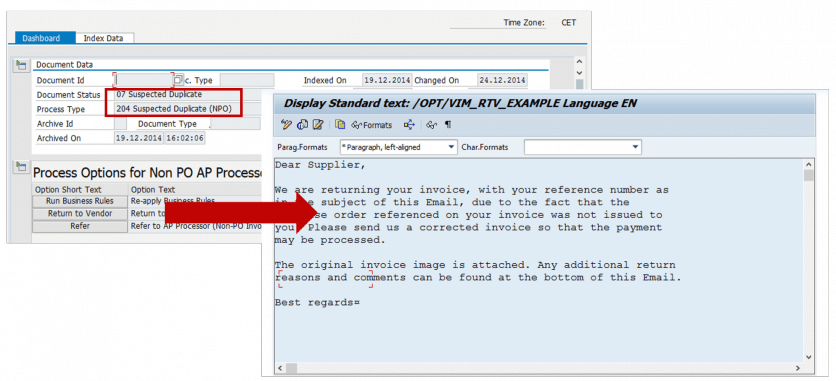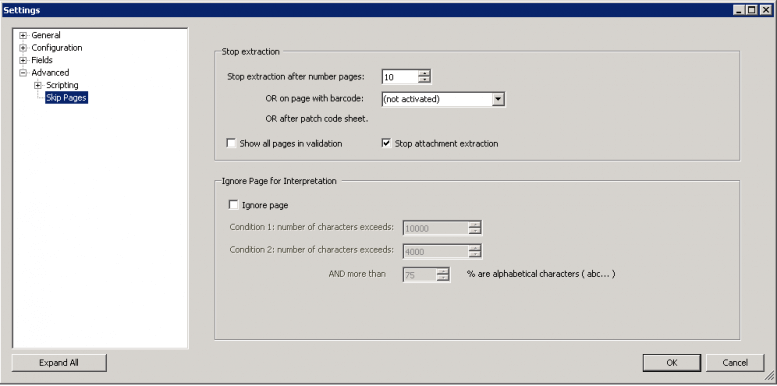I noticed it in my SAP career several times and maybe you recognize it too: Sometimes we forget that implementing and/or activating a small functionality in a system, can result in a major improvement. There are various reasons why these features are not implemented, like time and money or they are just unknown to you.
SAP Invoice Management by OpenText (VIM) and Invoice Capture Center (ICC) have several features which optimize your already streamlined invoice management without any major effort. Please find below two of these features available in the current release of VIM 7.0 and ICC 7.0. These small tweaks will help you to get more out of your system.
Return to vendor
With the latest Support Pack (SP4) of VIM 7.0 the Return to Vendor (RTV) functionality is introduced. This function allows you to inform the vendor via email that the invoice is being returned. It also terminates the Document Processing (DP) workflow. The vendor is informed by an e-mail that is generated based on a template that the VIM user selects. The email lists the return reasons. It may contain additional comments and may have the invoice image or additional images attached. VIM users can select several return reasons that are maintained in VIM customizing.
When the user clicks the Return to Vendor process option in the DP dashboard, a new screen opens where all RTV-related information must be entered.
When the RTV function is performed successfully, the generated email is sent using standard SAP functionality. The DP document is set to obsolete and the DP workflow is finished. Return reasons are stored along with the DP step comments.
So what is exactly the effort to implement this functionality?
- Configuring SAPConnect and SMTP (standard functionality and likely already configured);
- Maintain the new process option 2026 Return to Vendor in the customizing and maintain this option for selected process types and roles according to your organizational needs;
- Maintain return reasons;
- Maintain the e-mail templates through transaction SO10 (plain and simple…).

The vendor email address to be used is normally read from the vendor master, though you can override this logic using a user exit, which is a function module that can be maintained as a constant in the customizing.
Perhaps Return To Vendor isn’t the fanciest solution, but because of its flexibility it definitely contributes to a more efficient way of processing vendor invoices.
Stop attachment extraction
Sometimes invoices are followed by excessive attachments, while it is known that nearly all invoices won’t exceed a certain number of pages. In some applications high runtimes and problems may occur regarding invoices with very large attachments if no patch code sheet is used during extraction. With this patch code sheet, also known as a separator sheet, the character recognition and data extraction will be stopped as soon as start of an attachment has been determined.
However it is difficult to apply a separator sheet with, for example, digitally received PDF invoices; If you are using third party solutions, such as Kofax Express, you could pass this separator sheet within the created document. However it still remains a manual activity.
With the introduction of Invoice Capture Center 7.0 it is now possible to prevent these unnecessary high runtimes and problems during recognition, automatically.
This automatic attachment detection can be easily configured in the customizing of your ICC application. Just activate the “stop attachment extraction” check box. ICC then tries to determine whether the invoice has been completed at a preceding page so that the current page already belongs to an attachment. In this case ICC invoice processing is stopped for the remaining pages.
Of course you can combine this setting together with the option after how many pages the character recognition needs to be stopped.

